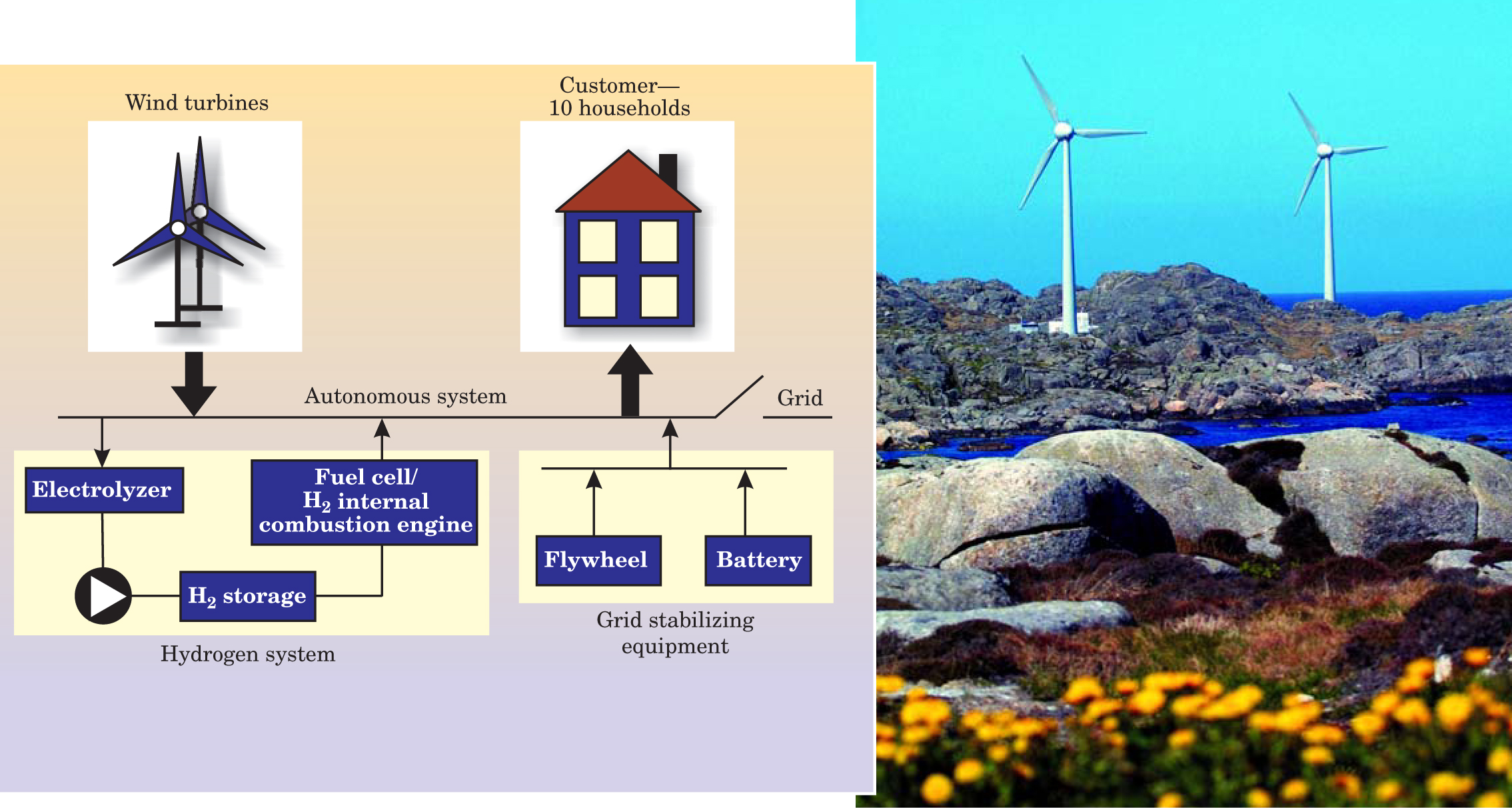Windy Island Hosts Energy Trial
DOI: 10.1063/1.1897558
A pilot test in energy self-sufficiency is under way on Utsira, a tiny windswept island off Norway’s southwestern coast. The experiment combines wind and hydrogen energy to serve 10 of the island’s 100 households.
“It’s the first autonomous experiment using only renewable energy and hydrogen,” says Bard Hammervold, communications manager for the roughly $6 million experiment, a partnership of Hydro ASA; Enercon, the German company that provided the wind turbines; and the Norwegian government. The main purpose of the Utsira experiment, says Torgeir Nakken, the Hydro physicist overseeing project R&D, “is to show that it actually delivers reliable, robust, high-quality power to customers all the time.”
“The problem with renewable energy—solar, wind—is that it is intermittent,” says Nakken. “To have a stable supply, so you can deliver even when you don’t have wind, storage is key. Hydrogen is one way of storing electrical energy.”
The Utsira setup consists of two 600-kW wind turbines, an electrolyzer that uses excess energy to break water molecules into oxygen and hydrogen, a generator and fuel cell to reconvert the hydrogen into electrical energy, and a stabilizing system. Says Nakken, “You measure wind production and power demand. As long as the production is larger, we serve customers directly.” That, he adds, is 80–90% of the time.
When wind energy production dips below demand, the system automatically draws on backups. That happens when the winds are too weak or too strong; to protect from mechanical damage, the turbines slow down for wind speeds greater than 25 m/s, and stop above 34 m/s. Fluctuations in wind energy production are smoothed over by tapping kinetic energy from a flywheel (see diagram). For gaps longer than a few minutes, energy is recovered from hydrogen. The system stores up to 12 m3 (at a pressure of 200 bar) of gaseous hydrogen, enough to supply power to participating Utsira residents for two or three days. If that were to fail, the mainland grid would serve as a backup.

Two 46-meter-tall wind turbines on Norway’s island of Utsira (right) are part of a prize-winning experiment in renewable energy. Excess energy is stored as hydrogen (diagram) and used when the wind doesn’t meet demand. The turbines’ production is sufficient to export energy to the mainland grid.
HYDRO

Actually, only about half of the energy from one of the turbines is dedicated to the pilot test; the rest feeds directly into Norway’s main electrical grid. The peak demand has been 50 kW, says Nakken. Half of one wind turbine gives 300 kW. That’s oversized, he says, “because you want to minimize the hydrogen part for technical and financial reasons. Instead of a large storage capacity, you want to have a large turbine.”
For the hydrogen conversion, the combustion engine is established technology based on the diesel engine. The Utsira experiment also has a 10-kW fuel cell. Says Nakken, “Without a doubt, the biggest unknown lies with the fuel cell. They are costly and their reliability for such applications is not proven. We decided we wanted a small fuel cell as a demonstration. It may be the choice of the future.” The combustion engine, he adds, “is noisier and not that efficient. But at least you know it works—and the cost is not more than one-tenth of a fuel cell.”
Bringing down costs “is vital” if the wind–hydrogen system is to be scaled up, says Hammervold. John Olav Tande, a scientist at SINTEF Energy Research in Trondheim, Norway, says testing the combination is a good idea. “You can learn a lot, and assess the ability of industry to build such systems.” But, he adds, “hydrogen is not necessarily the answer.”
The autonomous wind–hydrogen system might be an answer for remote areas, says Nakken. Less than halfway through the two-year experiment, he adds, “we have already had inquiries from Siberia and the Azore Islands.” The Utsira experiment dovetails with nonbinding goals of the European Union (Norway is not a member) to get 12% of energy from renewable sources by 2010 and 20% by 2020.
Utsira’s roughly 250 residents “are excited,” says Jostein Austrheim, the farmer who leases the land to the wind-energy project. “We don’t know when the power comes from the grid, wind, or hydrogen. It’s fantastic. Maybe [the experiment] will attract tourists.”
More about the Authors
Toni Feder. tfeder@aip.org
